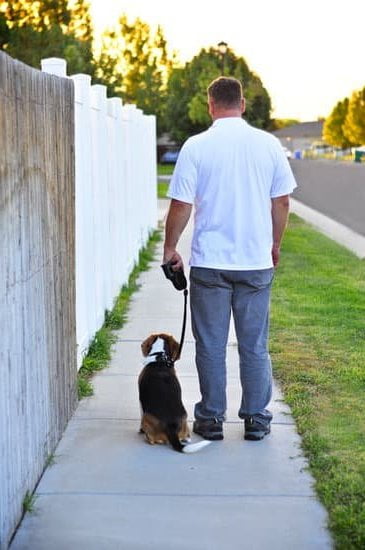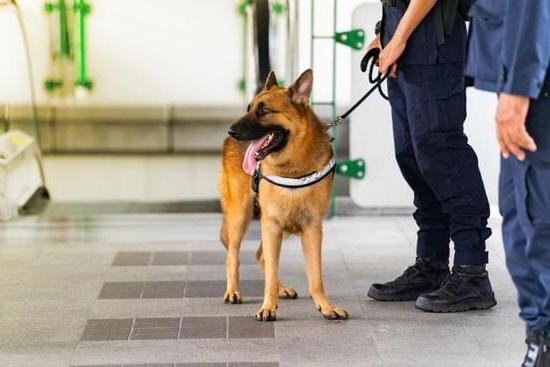So your dog has been having some potty training accidents in the house and you’ve decided it’s time to crate train him. Excellent decision! Crate training is an extremely effective way to house train a dog and can also be helpful in preventing destructive behavior.
Here’s a step-by-step guide to help you get started:
1. Choose the right crate.
When crate training a dog, it’s important to use a crate that is the right size. The crate should be big enough for the dog to stand up, turn around, and lie down in comfortably.
2. Introduce the dog to the crate.
Start by putting the crate in a quiet, comfortable spot in the house and placing a soft blanket and a few toys inside. Let the dog explore the crate on his own. Once he’s comfortable with the crate, you can start using it to confine him during short periods of time.
3. Feed the dog in the crate.
One of the best ways to get a dog to love his crate is to feed him his meals inside the crate. This will help him associate the crate with positive things, like food and comfort.
4. Let the dog out of the crate frequently.
Don’t leave the dog in the crate for long periods of time. Let him out to relieve himself and play briefly. This will help him associate the crate with good things, like freedom and fun.
5. Reward the dog for going in the crate.
If the dog willingly goes into the crate, reward him with a treat or a favorite toy. This will help him learn to love his crate.
By following these steps, you can help your dog learn to love his crate and use it as a safe and comfortable place to relax and rest.
Crate Training Dog At Night
There are many benefits to crate training your dog at night. Crate training can help your dog feel safe and secure, and can help to prevent destructive behavior.
The first step in crate training your dog at night is to choose the right crate. The crate should be big enough for your dog to stand up, turn around, and lie down in comfortably.
Once you have selected the right crate, start by putting your dog’s food and water bowls in the crate. Next, put your dog in the crate and give him a few treats. Once your dog is comfortable in the crate, close the door and leave him alone for a few minutes. Gradually increase the amount of time your dog spends in the crate.
If your dog starts to whine or bark in the crate, don’t give in and let him out. Wait until he is quiet before letting him out. This will help to teach your dog that he can only get out of the crate when he is quiet.
Crate training your dog at night can be a great way to help him feel safe and secure, and can help to prevent destructive behavior.
Crate Train Dog At Night
Dogs are pack animals and love to be around other dogs. When they are left alone for long periods of time, they can become bored and lonely. This can lead to destructive behavior, such as chewing on furniture or barking excessively. A crate can help alleviate this problem by providing your dog with a place to sleep and play.
When crate training your dog, it is important to make the crate feel like a safe and comfortable place. Start by putting a soft blanket or towel in the crate. Next, put a few of your dog’s favorite toys in the crate. Once your dog is comfortable going into the crate, you can start to close the door for short periods of time. gradually increase the amount of time your dog spends in the crate.
If your dog starts to whine or bark when you close the crate door, don’t let him out until he has stopped. This may take a little bit of time, but eventually your dog will learn that he can’t get out of the crate until he is quiet. Once your dog is quiet in the crate, you can let him out and give him a treat.
Using a crate can be a great way to help train your dog and can also help to reduce destructive behavior.
Dog Barking During Crate Training
When your dog barks in its crate, it’s probably trying to tell you something. barking is a natural way for dogs to communicate, and it’s often their way of trying to tell us something important. So what’s your dog trying to say when it barks in its crate?
There are a few different things that could be causing your dog to bark in its crate, and each one requires a different response from you. If your dog is barking because it’s anxious or scared, you’ll need to provide some reassurance and comfort. If your dog is barking because it’s uncomfortable or bored, you’ll need to provide some stimulation and exercise.
If your dog is barking because it’s anxious or scared, you’ll need to provide some reassurance and comfort.
If your dog is barking because it’s uncomfortable or bored, you’ll need to provide some stimulation and exercise.
One of the most important things to remember when crate training your dog is that you should never use the crate as a punishment. If your dog starts to associate the crate with negative feelings, it may start to bark in the crate even when there’s no real reason to be anxious or scared. So make sure that you only use the crate as a positive place for your dog, and provide plenty of positive reinforcement when it behaves appropriately.
How Long Should I Crate Train My Dog
?
Crate training is a popular way to house train dogs, as it provides them with a designated space to call their own. It can also be a helpful tool for managing a dog’s behavior, as dogs are instinctively reluctant to soil their sleeping area.
The amount of time you should crate train your dog depends on your individual dog’s needs and personality. Some dogs will take to crate training immediately and will only need a few short sessions to learn the basics. Other dogs may take a little longer to feel comfortable in their crate and may need a few weeks or months of regular training.
It’s important to be patient and consistent with crate training, and to never use the crate as a form of punishment. Start by putting your dog’s food and water bowls in the crate, and then begin feeding your dog their meals inside the crate. Once your dog is comfortable eating inside the crate, begin closing the door for short periods of time. Gradually increase the amount of time your dog spends in the crate, until they are able to remain in the crate comfortably for long periods of time.
If your dog starts to whine or bark in the crate, calmly ignore them until they stop. If they continue to make noise, you may need to give them a time-out in another room. Never yell at or punish your dog for whining or barking in the crate – this will only make them more anxious and likely to continue making noise.
Crate training can be a helpful tool for both dogs and their owners. By taking the time to properly train your dog, you can create a safe and comfortable space for them to relax in.

Welcome to the blog! I am a professional dog trainer and have been working with dogs for many years. In this blog, I will be discussing various topics related to dog training, including tips, tricks, and advice. I hope you find this information helpful and informative. Thanks for reading!





